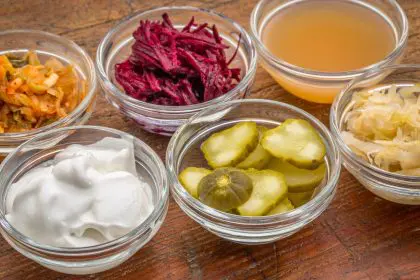Imagine having a powerful switch inside your body that, when flipped on, accelerates aging, triggers pain, and sets the stage for virtually every major chronic disease. Now imagine you have more control over this switch than you ever realized. This isn’t science fiction. This switch is inflammation, and understanding how to regulate it naturally could transform your health from the inside out.
Inflammation itself isn’t inherently bad. In its acute form, it’s a vital defense mechanism, sending immune cells and healing factors to areas of injury or infection. That familiar redness, heat, and swelling around a cut or sprain is inflammation doing its job perfectly, protecting and healing your body.
The problem arises when this protective response never turns off. Chronic, low-grade inflammation smolders throughout the body, damaging tissues and organs over time with no injury or infection to fight. This persistent inflammatory state has been implicated in everything from heart disease and diabetes to depression and Alzheimer’s, earning it the ominous nickname “the silent killer.”
What many people don’t realize is that this inflammatory switch responds dramatically to everyday choices. While medications can force it into submission, natural approaches often address the root causes, potentially offering more sustainable results without side effects. Let’s explore how your body’s inflammation controls work and the natural ways you can influence them.
Your diet as an inflammatory control panel
What you eat has a more immediate and powerful effect on inflammation than almost any other factor. Certain foods can directly trigger inflammatory pathways, while others contain compounds that actively suppress them.
Refined carbohydrates and sugars rapidly elevate blood glucose, triggering inflammatory responses throughout your body. When consumed regularly, these foods create ongoing inflammatory signals, particularly in sensitive tissues like blood vessels and joints. Products made with white flour, processed cereals, sugary drinks, and sweets essentially keep your finger pressed on the inflammation switch.
Conventional vegetable oils high in omega-6 fatty acids, including soybean, corn, and sunflower oils, produce compounds called eicosanoids that can promote inflammation when consumed in excess. These oils hide in countless processed foods, from salad dressings to baked goods, creating an inflammatory effect many people never connect to their symptoms.
Artificial additives including certain preservatives, colorings, and flavor enhancers may disrupt gut bacteria balance and intestinal barrier function, potentially triggering immune responses that increase systemic inflammation. Reading ingredient labels and choosing whole, unprocessed foods automatically reduces exposure to these inflammation triggers.
On the flip side, certain foods actively help turn down the inflammatory response. Fatty fish like salmon, mackerel, and sardines provide omega-3 fatty acids that directly compete with inflammatory omega-6 pathways. These beneficial fats help produce resolvins and protectins, compounds that actively shut down inflammatory processes.
Colorful fruits and vegetables contain powerful phytonutrients with anti-inflammatory effects. Berries offer anthocyanins that inhibit inflammatory enzymes. Leafy greens provide vitamin K and specialized antioxidants that reduce inflammatory messengers. Orange and yellow produce contains carotenoids that protect cell membranes from inflammatory damage. Aiming for a rainbow of plant foods naturally covers multiple anti-inflammatory compounds.
Herbs and spices concentrate some of nature’s most potent anti-inflammatory substances. Turmeric contains curcumin, which blocks major inflammatory pathways similar to some medications but without the side effects. Ginger contains gingerols that inhibit inflammatory enzymes, explaining its long traditional use for joint pain. Even common herbs like oregano, rosemary, and thyme contain compounds that help neutralize inflammatory triggers.
Fermented foods support healthy gut bacteria that maintain proper intestinal barrier function, preventing a major source of inflammatory signals. When your gut barrier becomes permeable, particles that should remain inside your digestive tract can leak into surrounding tissues, triggering immune responses that increase inflammation throughout your body. Yogurt, kefir, sauerkraut, and other fermented foods help maintain this crucial barrier.
Your stress response as an inflammation amplifier
While diet provides the raw materials that either promote or reduce inflammation, your stress response can dramatically amplify or dampen inflammatory signals. Understanding this connection gives you another powerful lever for controlling inflammation naturally.
Chronic stress keeps stress hormones like cortisol at inappropriate levels, directly activating inflammatory pathways. While acute stress initially suppresses inflammation, prolonged stress has the opposite effect, increasing production of inflammatory cytokines. This explains why periods of ongoing stress often coincide with flare-ups of inflammatory conditions like eczema, psoriasis, and arthritis.
Sleep deprivation rapidly increases inflammatory markers, sometimes after just one night of poor sleep. During proper sleep, your body performs crucial anti-inflammatory processes, including the clearing of inflammatory waste products from your brain. Without adequate sleep, these processes remain incomplete, allowing inflammation to build up over time.
Regular physical activity has profound anti-inflammatory effects, despite temporarily increasing inflammation during the activity itself. This short-term inflammatory stimulus triggers a compensatory anti-inflammatory response that ultimately reduces your baseline inflammation levels. However, excessive high-intensity exercise without adequate recovery can have the opposite effect, emphasizing the importance of balanced activity.
Mind-body practices offer some of the most accessible tools for directly influencing inflammatory responses through your nervous system. Meditation, deep breathing, and yoga activate your parasympathetic “rest-and-digest” system, which has direct anti-inflammatory effects. These practices also improve your resilience to stressors, reducing their inflammatory impact even when you can’t avoid them.
Social connection and positive emotions generate neurohormonal states that reduce inflammatory signaling. Loneliness and isolation, by contrast, create neuroendocrine profiles that promote inflammation. Making time for meaningful social interactions isn’t just good for your emotional health, it directly affects the physical pathways controlling inflammation.
Environmental triggers hiding in plain sight
Beyond diet and stress, your environment contains numerous hidden inflammation triggers that many people never consider. Identifying and minimizing these exposures can significantly reduce your overall inflammatory burden.
Indoor air quality has profound effects on inflammation, particularly in respiratory tissues. Common household irritants like dust, mold, and volatile organic compounds from furnishings and cleaning products can trigger ongoing inflammatory responses. Improving ventilation, using air purifiers, and choosing low-toxicity products creates an environment that doesn’t constantly trigger your inflammatory switch.
Personal care products containing certain preservatives, fragrances, and other synthetic ingredients may disrupt hormonal balance or directly irritate tissues, potentially triggering inflammatory responses. Simplifying your personal care routine and choosing products with minimal, recognizable ingredients reduces this daily exposure.
Drinking water may contain contaminants that interact with your immune system in ways that promote inflammation. While municipal water treatment removes major pathogens, it may not address all potentially inflammatory substances. A quality water filter appropriate for the specific contaminants in your area can reduce this exposure.
Light exposure patterns influence inflammatory processes through their effects on circadian rhythms and sleep quality. Excessive blue light exposure from screens in the evening disrupts melatonin production, potentially interfering with the anti-inflammatory processes that should occur during sleep. Creating a sunset-like environment in your home in the hours before bed supports your body’s natural anti-inflammatory cycle.
Toxin exposure through food, water, and air can directly activate inflammatory pathways. Pesticide residues, industrial chemicals, and heavy metals may trigger inflammatory responses even at levels considered “safe” by regulatory standards. While complete avoidance is impossible in the modern world, choosing organic foods when possible, filtering water, and minimizing use of synthetic chemicals in your home reduces your overall toxic burden.
The gut connection most people miss
Perhaps the most overlooked aspect of inflammation control lies in your digestive tract. Your gut houses over 70% of your immune tissue, making it the frontline for inflammatory regulation. Imbalances here can send inflammatory signals throughout your entire body.
Gut bacteria balance plays a crucial role in inflammatory control. Certain bacterial species produce compounds that reduce inflammation, while others produce inflammatory triggers. Diet directly shapes which bacteria thrive in your gut ecosystem. Fiber-rich plant foods feed beneficial bacteria that produce short-chain fatty acids, some of the body’s most potent anti-inflammatory compounds. By contrast, diets high in sugar, refined carbs, and certain artificial additives can promote bacteria that increase inflammatory signals.
Intestinal permeability, often called “leaky gut,” allows partially digested food particles, toxins, and bacteria to pass into tissues surrounding the gut, triggering immune responses that can increase body-wide inflammation. Factors that may contribute to increased intestinal permeability include chronic stress, certain medications, excessive alcohol, and inflammatory foods. Addressing these factors while consuming foods that support gut barrier function, like bone broth, fermented foods, and prebiotic fibers, helps restore this crucial barrier.
Food sensitivities trigger inflammatory responses that extend far beyond digestive symptoms. When you regularly consume foods your body reacts to, the resulting inflammation can manifest as joint pain, skin problems, brain fog, fatigue, and numerous other symptoms seemingly unrelated to digestion. Common triggers include gluten, dairy, soy, corn, and eggs, though individual sensitivities vary widely. Temporarily eliminating suspect foods, then carefully reintroducing them while monitoring symptoms, can identify personal inflammatory triggers.
Digestive enzyme production affects how completely you break down food, potentially influencing inflammatory responses. Incompletely digested proteins, in particular, can trigger immune reactions. Stress, aging, and certain health conditions can reduce enzyme production. Mindful eating practices like thorough chewing, eating in a relaxed state, and consuming bitter foods before meals naturally support optimal enzyme secretion.
Stomach acid levels influence both digestion and protection against potentially inflammatory microbes in food. Contrary to popular belief, many people have insufficient rather than excessive stomach acid, particularly as they age. Symptoms of inadequate stomach acid include bloating after meals, feeling overly full, and recurrent intestinal infections. Simple measures like avoiding drinking large amounts of liquid with meals and consuming a teaspoon of apple cider vinegar in water before eating can support proper acid levels.
Movement patterns that reset inflammatory signaling
Physical activity profoundly influences inflammatory processes, but the relationship is more nuanced than simply “exercise is good.” Specific types of movement affect inflammation in different ways, offering targeted approaches for various inflammatory conditions.
Moderate aerobic exercise produces an anti-inflammatory environment in the body. Activities like brisk walking, swimming, or cycling at conversational pace trigger muscle contractions that release myokines, special proteins that inhibit inflammatory cytokines. Just 20 minutes of moderate activity can measurably reduce inflammatory markers, with effects lasting for several hours. Consistency matters more than intensity, with daily moderate movement providing more anti-inflammatory benefits than occasional intense workouts.
Resistance training creates an initial inflammatory response as muscles experience microscopic damage, followed by a stronger anti-inflammatory recovery process. This controlled inflammatory cycle essentially “trains” your immune system to respond more appropriately, potentially reducing inappropriate inflammatory reactions elsewhere in the body. For optimal anti-inflammatory effects, focus on full-body movements with proper recovery between sessions.
Flexibility practices like yoga and tai chi combine physical movement with breathing and mindfulness, creating powerful anti-inflammatory effects through multiple pathways. These practices reduce stress hormones, improve circulation to tissues that might otherwise receive limited blood flow, and promote lymphatic drainage of inflammatory waste products. The mindfulness component also helps interrupt inflammatory thought patterns that can directly influence physical inflammation.
Posture and movement throughout the day affect tissue circulation and inflammatory buildup. Prolonged sitting or static positions restrict blood flow and lymphatic drainage, potentially allowing inflammatory waste products to accumulate in tissues. Simply changing positions frequently, taking short movement breaks, and maintaining good alignment during daily activities helps prevent this localized inflammatory buildup.
Outdoor movement adds additional anti-inflammatory benefits through exposure to natural light, fresh air, and often greenery. Research shows that exercise in natural settings produces greater reductions in stress hormones and inflammatory markers compared to the same activity performed indoors. Even brief “nature bathing” walks appear to have immediate effects on inflammatory signaling.
The mind-body techniques that target inflammation
While physical approaches to inflammation control are essential, the mind-body connection offers equally powerful tools. Your thoughts, emotions, and breath directly influence inflammatory pathways through neural and hormonal mechanisms.
Diaphragmatic breathing quickly shifts your autonomic nervous system from sympathetic “fight-or-flight” mode, which promotes inflammation, to parasympathetic “rest-and-digest” mode, which suppresses it. The simple practice of breathing slowly and deeply into your abdomen for just a few minutes activates the vagus nerve, releasing acetylcholine that inhibits inflammatory cytokine production. This makes deep breathing one of the most accessible on-demand tools for inflammatory control.
Meditation practices, particularly those focusing on loving-kindness and compassion, appear to reduce inflammation through multiple pathways. Regular meditators show lower levels of inflammatory markers like C-reactive protein and interleukin-6. Even beginners can experience benefits, with studies showing measurable changes in inflammatory gene expression after just a few weeks of regular practice.
Cognitive approaches to pain and illness influence inflammatory responses through the brain-body connection. Catastrophizing and ruminating about symptoms increases activity in brain regions that amplify both pain perception and inflammatory signaling. Cognitive techniques that reduce threat perception and increase a sense of control appear to directly influence inflammatory pathways, explaining why mindset interventions can produce measurable physical changes in inflammatory conditions.
Sleep optimization might be the most underrated mind-body approach to inflammation control. Your brain performs crucial anti-inflammatory maintenance during deep sleep phases, and disruption of these processes contributes to chronic low-grade inflammation. Creating consistent sleep and wake times, limiting blue light exposure before bed, maintaining a cool sleep environment, and addressing sleep disruptors can dramatically improve inflammatory regulation.
Emotional awareness and processing influence inflammatory signaling through both neural and hormonal pathways. Unexpressed emotions and psychological stress create physiological states that promote inflammation. Practices that help process emotions, like journaling, talking with a trusted friend, or working with a therapist, can reduce the inflammatory burden of emotional distress. This doesn’t mean suppressing negative emotions, but rather processing them in ways that allow resolution rather than chronic stress activation.
Understanding and implementing these natural approaches to inflammation control puts you in the driver’s seat of your health. While acute inflammation remains a crucial protective response, chronic inflammation doesn’t have to be your body’s default state. Through thoughtful choices about diet, movement, stress management, and environmental factors, you can help reset your inflammatory switches to appropriate functioning, potentially preventing or ameliorating the countless conditions driven by unchecked inflammation.












